The virtual pipeline market size is projected to reach US$ 1.99 billion in 2024 and is expected to reach US$ 3.02 billion by 2031. The virtual pipeline market is estimated to register a CAGR of 6.2% during 2025–2031.
Virtual Pipeline Market Analysis
Virtual pipelines are systems used to transport natural gas and other gaseous fuels to regions that are not connected to traditional pipeline infrastructure. These systems use various transport modes, including trucks, railcars, and ships equipped with high-pressure or cryogenic containers. The growing demand for flexible, cost-effective, and cleaner energy delivery solutions is driving the need for reliable virtual pipeline systems. These solutions offer efficient, scalable, and safe alternatives to fixed pipelines.
Virtual Pipeline Market Overview
The market for virtual pipelines is essential to the global energy distribution industry. It helps deliver LNG and CNG to locations without direct pipeline access in a timely and safe manner. Virtual pipeline systems link end users such as power plants, industrial facilities, and isolated communities with gas production or processing locations.
These systems are designed to meet the needs of different end-user markets such as mobile fueling units and containerized gas transport. As the world focuses on energy access, emission reductions, and cleaner fuels, the need for advanced, efficient and environmentally friendly virtual pipeline solutions continues to grow.
Customize This Report To Suit Your Requirement
You will get customization on any report - free of charge - including parts of this report, or country-level analysis, Excel Data pack, as well as avail great offers and discounts for start-ups & universities
Virtual Pipeline Market: Strategic Insights
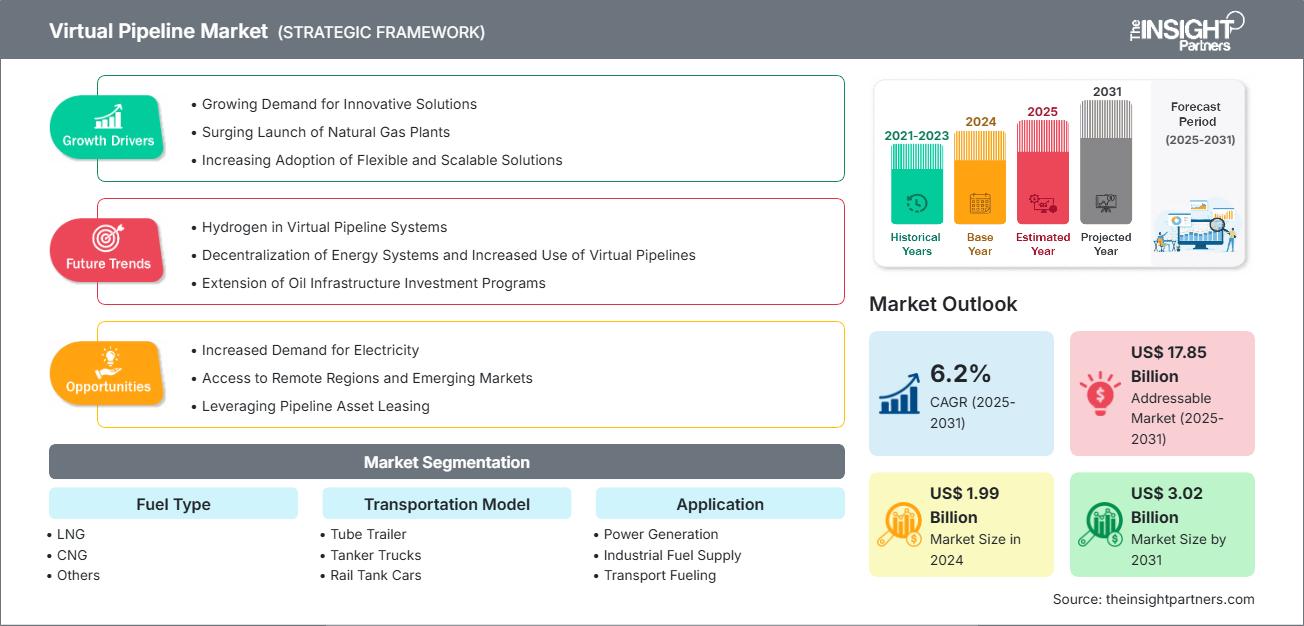
-
Get Top Key Market Trends of this report.This FREE sample will include data analysis, ranging from market trends to estimates and forecasts.
Virtual Pipeline Market Drivers and Opportunities
Market Drivers:
- Increasing Demand for Energy in Remote Regions: Virtual pipelines ensure dependable gas delivery to places with no fixed infrastructure to support growing energy use.
- Transition Away from Coal and Diesel Fuels: As nations turn away from coal and diesel fuels, virtual pipelines will facilitate the flexible transportation of cleaner fuels such as CNG and LNG.
- Concern for Lower Emissions and Greater Efficiency: They supports climate objectives by delivering energy in an efficient/less emission manner.
- Support from Government and Clean Energy Policies: Worldwide clean energy policies and incentives are expediting the adoption of virtual pipe systems.
- Advancements in Technology: Technology in the areas of storage, safety, and logistics mean virtual pipelines will become safer, more reliable, and cost effective.
Market Opportunities:
- Growing Potential in Developing Markets: Asia, Africa, and Latin America offer major growth due to limited pipelines and rising energy demand.
- Collaborations with Energy and Logistics Partners: Partnering with gas producers and transport providers improves reach, efficiency, and customer service.
- Rising Use of LNG and CNG Across Sectors: Industries and fleets are switching to cleaner fuels, with virtual pipelines easing their supply in remote areas.
- Adoption by Small and Medium Operators: Smaller companies are using virtual pipelines to serve markets lacking infrastructure, creating new opportunities.
- Global Push for Sustainability and Regulation Compliance: Stricter environmental standards increase demand for sustainable energy delivery, where virtual pipelines play a key role.
Virtual Pipeline Market Report Segmentation Analysis
The virtual pipeline market is divided into different segments to give a clearer view of how it works, its growth potential, and the latest trends. Below is the standard segmentation approach used in most industry reports:
By Fuel Type:
- LNG: LNG is widely used in virtual pipeline systems for transporting natural gas to regions without pipeline infrastructure. Its high energy density and ease of transport make it ideal for long-distance and large-volume distribution.
- CNG: CNG is commonly used in virtual pipelines for shorter distances or smaller-scale distribution. It is preferred for its lower compression costs and suitability for remote areas with moderate gas demand.
- Others: This segment includes renewable natural gas (RNG) and other alternative gaseous fuels used in virtual pipelines. These options support decarbonization efforts and are gaining traction in regions aiming to reduce emissions and enhance energy security.
By Transportation Model:
- Tube Trailer: Tube trailers are a primary mode for transporting CNG and are widely used in virtual pipeline networks. They offer flexibility and mobility, enabling gas delivery to remote or off-grid locations without permanent infrastructure.
- Tanker Trucks: Tanker trucks are used to transport LNG over medium to long distances. They play a critical role in virtual pipelines by ensuring safe and efficient LNG delivery, especially to industrial users and power generation sites.
- Rail Tank Cars: Rail tank cars are employed for large-scale LNG transport over long distances. They support high-volume delivery within virtual pipeline systems, particularly in regions where road transport is less viable or economical.
- Marine Vessels: Marine vessels are utilized in international and inter-regional virtual pipeline operations for bulk LNG transportation. They are essential for connecting production terminals to regasification sites in coastal or island regions lacking pipeline infrastructure.
By Application:
- Power Generation
- Industrial Fuel Supply
- Transport Fueling
- Residential
- Commercial
- Mining Construction
- Others
By Geography:
- North America
- Europe
- Asia Pacific
- South America
- Middle East & Africa
The virtual pipeline market in Asia Pacific is expected to witness the fastest growth. Rising energy demand in remote and off-grid areas, coupled with limited access to natural gas infrastructure, is driving the adoption of virtual pipeline solutions across the region. Government initiatives to expand clean energy access are also supporting market growth.
Virtual Pipeline Market Regional InsightsThe regional trends and factors influencing the Virtual Pipeline Market throughout the forecast period have been thoroughly explained by the analysts at The Insight Partners. This section also discusses Virtual Pipeline Market segments and geography across North America, Europe, Asia Pacific, Middle East and Africa, and South and Central America.
Virtual Pipeline Market Report Scope
| Report Attribute | Details |
|---|---|
| Market size in 2024 | US$ 1.99 Billion |
| Market Size by 2031 | US$ 3.02 Billion |
| Global CAGR (2025 - 2031) | 6.2% |
| Historical Data | 2021-2023 |
| Forecast period | 2025-2031 |
| Segments Covered |
By Fuel Type
|
| Regions and Countries Covered |
North America
|
| Market leaders and key company profiles |
|
Virtual Pipeline Market Players Density: Understanding Its Impact on Business Dynamics
The Virtual Pipeline Market is growing rapidly, driven by increasing end-user demand due to factors such as evolving consumer preferences, technological advancements, and greater awareness of the product's benefits. As demand rises, businesses are expanding their offerings, innovating to meet consumer needs, and capitalizing on emerging trends, which further fuels market growth.
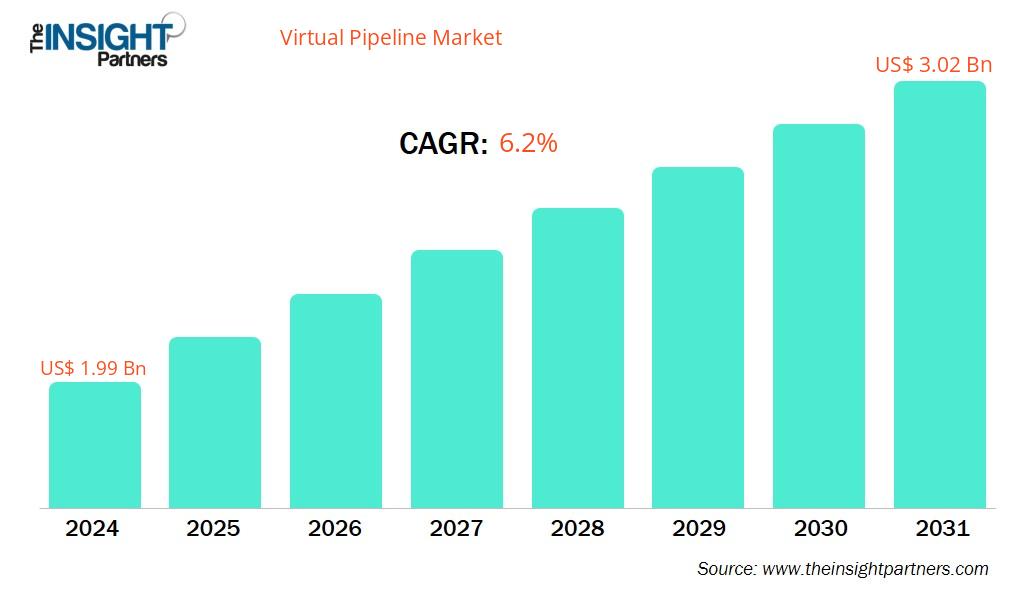
- Get the Virtual Pipeline Market top key players overview
Virtual Pipeline Market Share Analysis by Geography
Asia Pacific is expected to grow the fastest in the next few years. Emerging markets in Latin America, the Middle East, and Africa also have many untapped opportunities for virtual pipeline providers to expand.
The virtual pipeline market develops differently across regions due to factors such as energy access challenges, infrastructure limitations, rising industrial demand, and supportive government policies. Below is a summary of market share and trends by region:
1. North America
- Market Share: Holds a significant portion due to established gas infrastructure and early adoption of virtual pipeline systems
-
Key Drivers:
- Demand for natural gas in off-grid and remote locations
- Availability of shale gas and LNG exports
- Government focus on clean and decentralized energy solutions
- Trends: Expansion of virtual LNG supply chains; growing investments in small-scale LNG and CNG distribution
2. Europe
- Market Share: Moderate share with increasing interest in energy diversification and low-emission fuel alternatives
-
Key Drivers:
- Shift away from Russian pipeline gas
- Focus on renewable and decentralized energy supply
- Regulations supporting low-carbon fuels
- Trends: Rise in bio-CNG and renewable gas use; adoption of virtual pipelines for industrial and residential heating
3. Asia Pacific
- Market Share: Expected to grow the fastest due to energy access needs and industrial demand
-
Key Drivers:
- Lack of permanent pipeline infrastructure in remote areas
- Rapid urbanization and industrial growth
- Government support for clean fuel alternatives
- Trends: Surge in LNG-based virtual pipeline projects; increased cross-border gas transportation
4. South and Central America
- Market Share: Developing market with increasing adoption in countries lacking extensive pipeline networks
-
Key Drivers:
- Regional push for cleaner energy
- Challenges in pipeline expansion across diverse terrain
- Industrial demand for flexible gas delivery
- Trends: xpansion of mobile CNG and LNG delivery systems; public-private partnerships to improve energy access
5. Middle East and Africa
- Market Share: Emerging market with growing interest in gas monetization and energy access
-
Key Drivers:
- Need to deliver gas to remote and underserved areas
- Availability of natural gas resources
- Investment in small- and mid-scale LNG projects
- Trends: Growth in CNG transportation networks; use of virtual pipelines for off-grid energy supply.
Virtual Pipeline Market Players Density: Understanding Its Impact on Business Dynamics
High Market Density and Competition
Competition is strong due to the presence of established players such as Kinder Morgan; NG Advantage LLC; Hexagon Agility; Gas Malaysia Berhad; Galileo Technologies; and FIBA Technologies, Inc. Regional and niche providers such as CNG Services Limited (UK); Bayotech, Inc. (US); and Sinocleansky (China) are also adding to the competitive landscape across different regions.
This high level of competition urges companies to stand out by offering:
- Advanced virtual pipeline technologies and modular systems
- Cost-effective LNG and CNG transport solutions
- Strong partnerships with gas suppliers, logistics providers, and end users
Opportunities and Strategic Moves
- Forming strategic alliances with LNG/CNG producers, logistics providers, and storage solution companies is becoming essential for scalability and market penetration
- Investment in small-scale LNG infrastructure and mobile gas distribution technologies to expand reach in off-grid and underserved regions
- Adoption of modular and scalable virtual pipeline systems enables flexible deployment across industrial, residential, and remote applications.
Disclaimer: The companies listed above are not ranked in any particular order.
Other companies analysed during the course of research:
- GasGrows Solutions Private Limited
- Petroliam Nasional Berhad
- Xpress Natural Gas
- Gáslink – Gás Natural, S.A
- Certarus Ltd.
- Throttle Energy Inc.
- Verdek Green Technologies Corp.
- Greenville LNG Company Limited
- Baker Hughes Company
- Luxfer Holdings
Virtual Pipeline Market News and Recent Developments
- Hexagon Agility to Supply CNG Fuel Systems for 100 Trucks in Major Mexico Rollout Hexagon Agility has received an order to deliver compressed natural gas (CNG) fuel systems for 100 heavy-duty trucks to be operated by Trayecto, the largest trucking company in Mexico. Each vehicle will feature Hexagon Agility’s largest available onboard CNG fueling system, as well as the new Cummins X15N natural gas engine..
- California Service Site Expansion Meets Demand FIBA Technologies’ Adelanto, California, trailer repair service centre is to undergo a major expansion program that will add five new service bays and provide a new parts department and workshop area. The project is in response to demand for a greater capacity for servicing Type IV vessels, as well as to meet the needs of the growing electronics sector in the West Coast region.
- Hexagon Agility receives order for Mobile Pipeline TITAN 450 modules from a premier Oilfield service company Hexagon Agility, a business of Hexagon Composites, has received an order for Mobile Pipeline TITAN 450 modules from a leading U.S. Oilfield Services company. The modules will enable the company’s fleet of well completion equipment to transition from diesel fuel to natural gas, reducing both carbon emissions and operating costs.
Virtual Pipeline Market Report Coverage and Deliverables
The "Virtual Pipeline Market Size and Forecast (2021–2031)" report provides a detailed analysis of the market covering below areas:
- Virtual Pipeline Market size and forecast at global, regional, and country levels for all the key market segments covered under the scope
- Virtual Pipeline Market trends, as well as market dynamics such as drivers, restraints, and key opportunities
- Detailed PEST and SWOT analysis
- Virtual Pipeline Market analysis covering key market trends, global and regional framework, major players, regulations, and recent market developments
- Industry landscape and competition analysis covering market concentration, heat map analysis, prominent players, and recent developments for the Virtual Pipeline Market
- Detailed company profiles
Frequently Asked Questions
Which leading companies are in the virtual pipeline market?
What are the challenges faced by the virtual pipeline market?
High Investment Costs: One major challenge faced by the virtual pipeline market is the high initial investment cost. Establishing infrastructure for storage, transportation, and handling of LNG and CNG requires significant capital, which can limit adoption, especially in developing regions.
Which regions are leading in the adoption of the virtual pipeline?
1. Asia Pacific: : The virtual pipeline market is growing rapidly in Asia Pacific due to rising urbanization, industrial expansion, and government support for clean energy. Countries suchbas China, India, Japan, and South Korea are driving demand with their increasing focus on natural gas infrastructure and energy access.
2. Europe: Europe’s virtual pipeline market benefits from stringent emission regulations and a strong push for cleaner fuels. Growing demand from industrial sectors and energy companies is fueling the adoption of virtual pipeline solutions.
3. North America: The North American virtual pipeline market is expanding steadily, driven by increasing demand for flexible natural gas delivery and investments in small-scale LNG and CNG infrastructure.
Which fuel type segment is gaining traction in the virtual pipeline market?
Which are the various application in the virtual pipeline market?
1. Power Generation: Supplying natural gas to power plants in remote or off-grid locations.
2. Industrial Fuel Supply: Providing fuel for industrial processes where pipeline access is limited.
3. Transport Fueling: Delivering CNG and LNG to fuel stations and vehicle fleets.
4. Residential: Supplying natural gas for heating and cooking in homes without pipeline connections.
5. Commercial: Serving businesses with flexible gas delivery solutions for heating and operations.
6. Mining Construction: Fueling mining and construction equipment in remote areas.
7. Other: Supporting various niche applications requiring mobile and flexible gas delivery.
What are the key factors driving growth in the virtual pipeline market?
1. Rising Demand for Energy in Remote Areas:
2. Virtual pipelines provide reliable gas delivery to locations without fixed infrastructure, meeting growing energy needs.
3. Shift Towards Cleaner Energy Sources:
4. As countries move away from coal and diesel, virtual pipelines enable flexible transport of cleaner fuels such as CNG and LNG.
5. Focus on Lower Emissions and Better Efficiency:
6. They support climate goals by delivering energy in an efficient and low-emission manner.
What is the current size of the global virtual pipeline market?
- Historical Analysis (2 Years), Base Year, Forecast (7 Years) with CAGR
- PEST and SWOT Analysis
- Market Size Value / Volume - Global, Regional, Country
- Industry and Competitive Landscape
- Excel Dataset
Recent Reports
Testimonials
Reason to Buy
- Informed Decision-Making
- Understanding Market Dynamics
- Competitive Analysis
- Identifying Emerging Markets
- Customer Insights
- Market Forecasts
- Risk Mitigation
- Boosting Operational Efficiency
- Strategic Planning
- Investment Justification
- Tracking Industry Innovations
- Aligning with Regulatory Trends












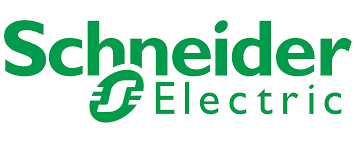


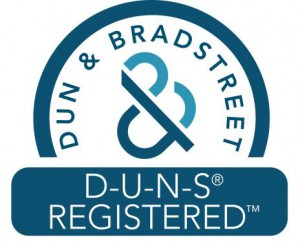
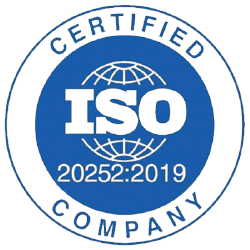




 Get Free Sample For
Get Free Sample For